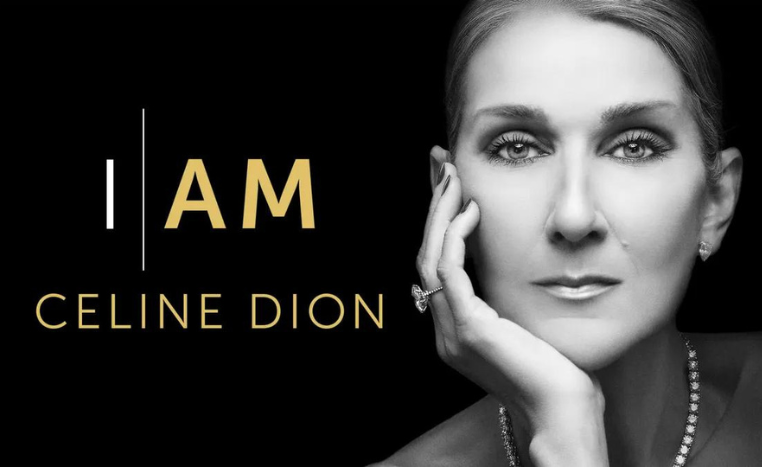The new documentary “I Am: Céline Dion” is a heartbreaking yet extraordinary look into the life of the “Queen of Power Ballads.” Born Céline Marie Claudette Dion to a family of fourteen, she has been familiar with struggle from an early age. Music was both a release and a form of beautiful expression for her family and a means of providing the very necessary subsistence they needed to survive.
Discovered at age 12 by her manager (and future husband) René Angélil, Céline worked hard to develop her career as one of the top popular vocalists. Though she was naturally gifted, Céline worked hard to care for her instrument. In the 90s, she had a scare onstage when she lost her voice. “When I lost my voice it was like losing everything,” she said in the 1996 ‘Intimate Portrait’ documentary. “There are a lot of things you have to go through in life – it makes you stronger.” She received a preliminary diagnosis of nodules, but fortunately, a second opinion showed no such growths and instead inflammation. When a regimen of vocal rest and therapy was prescribed, Céline was relieved, “Someone wanted to give my life back.”
Céline shows her vocal routine in 1996 documentary
She carefully followed all the advice and went on to have a career selling over 200 million albums and winning five GRAMMY awards. In particular, though, you can see her love for live performances and an audience. “When you come in a studio and you record, it sounds great. But when you go onstage, it will be greater. There’s no mistake onstage because there’s humanity, bonding, emotions. And you forget your words, and you panic for a second, and out of the blue they start to sing it.”
Céline has faced many personal struggles, including the death of her husband in 2016, but this documentary focuses on her current diagnosis with a rare neurological disorder known as stiff person syndrome. The disease is debilitating – we see how it takes a vibrant, active, strong woman and makes it painful or even sometimes impossible to walk and move, and completely strips away her hard-earned vocal freedom. The illness can also cause severe spasms and seizures.
As a singer or lover of music, it is absolutely heartbreaking to see Céline break down as she shows what happens for her vocally when she tries to sing – her lungs constricting the airflow so that instead of the pure, flowing notes, the tone breaks. It is painful to hear her shares, “It’s very difficult for me to hear that and to show this to you. I don’t want people to hear that.”
Stream I Am: Céline Dion on Amazon Prime Video.
Céline details how her voice has been the “conductor of my life” but not just that. From an early age, her mother taught her the show must go on, to pretend nothing was wrong onstage. We see footage of her gracefully dancing across the screen juxtaposed against Céline now struggling to make smaller movements. With her team, she successfully hid the illness for a long time, she admits, resorting to dangerous levels of medication just to allow her to function. “When I have to cancel shows, you know, we have to tell the crowd why, the people why. Lying. I can’t lie anymore… From a sinus infection to an ear infection to whatever. Sometimes I would point my microphone towards the audience and I would make them sing it. There are moments where I cheated, and I tapped on the microphone like it was the microphone’s fault. I did what my mom said. I didn’t flinch. And there are also moments where we had to stop the show. Quick change and I never came back. The lie is too heavy now.”
It’s clear that she has always set a high standard for herself and seeing her have to start over again at fifty-six, building baby steps at a time, shows both the crushing effects of the illness but also the resilience of someone who could give up but simply refuses to. Céline passionately shares in the documentary, “I still see myself dance and sing and I always find plan B and C, you know? That’s me. If I can’t run… I’ll walk. If I can’t walk, I’ll crawl – but I won’t stop.”
Perhaps the most shocking and devastating part is when Céline is finally back in the studio after two years, recording the inspirational ballad “Love Again.” It’s clear she has difficulty working within the limits of her new vocal abilities, but she continues to try again and again. However, the heightened emotions trigger a seizure. It feels voyeuristic to invade this personal moment, but Céline herself insisted on keeping this part in the documentary.
Once she comes out of the spasm, Céline is crushed to realize the very thing she loves can cause the worst symptoms of her condition. “Do you think it’s because I had a good time over there?” Her sports therapist Terrill affirms, “Your brain was just overstimulated.” Céline is clearly distraught. “What’s gonna happen… if I can’t get stimulated by what I love and then I’m gonna go onstage and, like, uh, you gonna put the pulse oximeter on me and you gonna turn me on my back?” Terrill responds, “It’s scary I know… this is not the end of your journey.” And in a powerful statement, they finish the recovery session with Céline singing along to “Who I Am” by Wyn Starks. The lyrics state, “It’s always been there, it just took me a minute to find it. If I were to be anybody else, I’d just be hiding who I am.” It’s clear that Céline is no longer hiding. She’s facing this struggle head-on, and the music community will be here cheering every step on her path to recovery.
Céline’s crossover connection
The documentary begins with the voice of Maria Callas, and throughout the documentary we continue to hear her. Céline wears a necklace gifted by her late husband that belonged to Maria Callas and she is seen wishing to be blessed with the diva’s strength.
Céline has many connections to crossover music and is said to have herself trained in classical technique. Here are some videos sharing special moments from her career especially for the classical crossover fan.
Improvisation with Ben Moody
“La Diva” Tribute to Maria Callas
Caruso with Florent Pagny
“I Hate You Then I Love You” with Luciano Pavarotti
“The Prayer” with Andrea Bocelli
“Habanera” from Bizet’s Carmen
Update: During the 2024 opening ceremony of the Olympic Games in Paris, Céline performed “La Vie En Rose.” Seeing her return to the stage at such a high-profile event was emotional for both the artist and the audience. While we know her struggles are far from over, it was a moment of pure triumph after the journey she has been on—a beautiful moment to witness.








